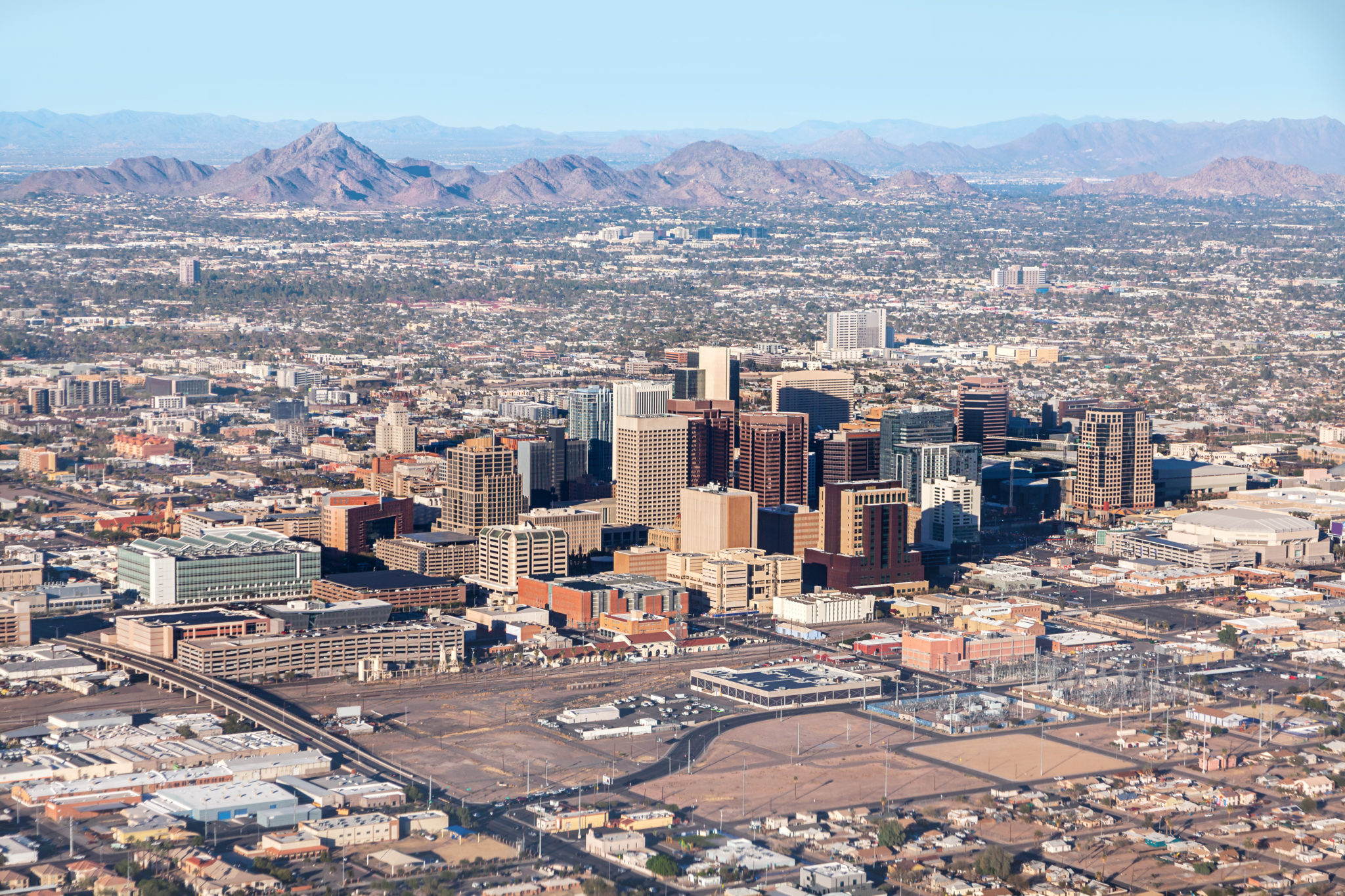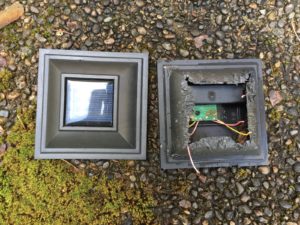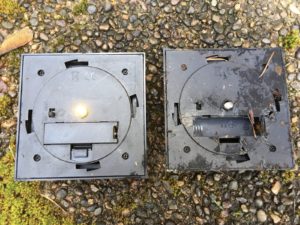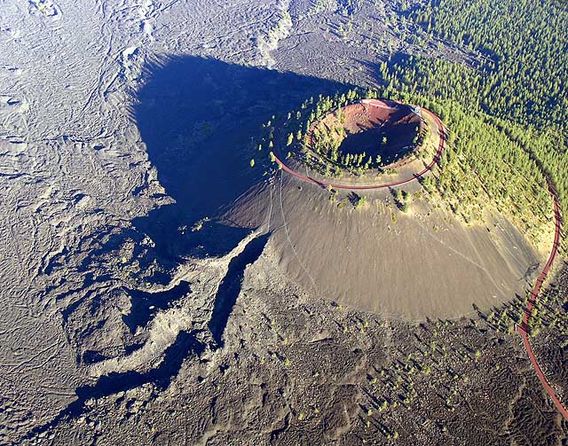July 29th, 2021 at 6:20 pm (History, Language, Vocabulary)
 Recently I discovered how Phoenix, Arizona, got its name. In ancient times, people living in the area dug a bunch of canals (135 miles of them!) to direct water from the Salt River to the plains where they were growing crops. In 1867, the area was colonized by white settlers who also dug canals and named the town Swilling’s Mill (after founder Jack Swilling). Darrell Duppa suggested the name Phoenix, “inasmuch as the new town would spring from the ruins of a former civilization.” I think this is pretty cool – a recognition (however subtle) that history didn’t begin when white pioneers reached an area.
Recently I discovered how Phoenix, Arizona, got its name. In ancient times, people living in the area dug a bunch of canals (135 miles of them!) to direct water from the Salt River to the plains where they were growing crops. In 1867, the area was colonized by white settlers who also dug canals and named the town Swilling’s Mill (after founder Jack Swilling). Darrell Duppa suggested the name Phoenix, “inasmuch as the new town would spring from the ruins of a former civilization.” I think this is pretty cool – a recognition (however subtle) that history didn’t begin when white pioneers reached an area.
1 Comments
1 of 1 people learned something from this entry.
April 11th, 2021 at 10:27 pm (Animals, Vocabulary)
So… there’s a faint northern constellation called Camelopardalis. It is so named because someone thought it looked kind of like a giraffe. Which was known as a kamelopardalis, or a camel-leopard, in Greek – because come on guys, it has a long camel-like neck and it also has spots! This cracks me up! :) Words are awesome!
Surprisingly, even English-speaking folks used “camelopard” in medieval times (pr. kuh-MEH-luh-pard).
Of course then I had to wonder why we started calling it “giraffe”. Apparently “giraffe” derives from the Arabic word “zar?fah” (fast-walker). So that one’s pretty good, but not nearly as descriptive. I say, bring back the camelopard! Who’s with me?
Comments
March 28th, 2021 at 2:11 pm (Animals, Technology)
 Last year, I bought some solar-powered garden lights and put them along my driveway to make it easier (and more welcoming) to follow the driveway to my house. I was very pleased with the little spots of light marking the edge of the driveway. Then I kept finding two of them knocked over… with scrape/gnawing marks on them. The top part of one disappeared entirely. These had plastic tops, and maybe weren’t as durable, but it was weird to have a piece just disappear. What animal would want it? But what human would take just the top of one light? The two affected lights were under a tree, and squirrels maybe jumped onto them? My best hypothesis was that the squirrels thought they were some kind of bird feeder and hoped there were seeds inside the glass. I finally relocated them to the front of the house and bought metal ones to replace along the driveway. Neither set has suffered further attacks.
Last year, I bought some solar-powered garden lights and put them along my driveway to make it easier (and more welcoming) to follow the driveway to my house. I was very pleased with the little spots of light marking the edge of the driveway. Then I kept finding two of them knocked over… with scrape/gnawing marks on them. The top part of one disappeared entirely. These had plastic tops, and maybe weren’t as durable, but it was weird to have a piece just disappear. What animal would want it? But what human would take just the top of one light? The two affected lights were under a tree, and squirrels maybe jumped onto them? My best hypothesis was that the squirrels thought they were some kind of bird feeder and hoped there were seeds inside the glass. I finally relocated them to the front of the house and bought metal ones to replace along the driveway. Neither set has suffered further attacks.
Recently I was doing some yard work, and I found the missing top, buried in leaves! But it just raised more questions. Because something spent some serious time and effort extracting just the solar panel. See below an undamaged top (left) and the one I found (right):

You can click to enlarge. It looks like dedicated… gnawing, to me. A human would have used a tool – or just taken the whole top with them (why dig out the solar panel and then leave the shell?).
The back side is equally weird, with the rechargeable battery and its cover removed. A human would have opened the cover with their fingers. Instead, whatever took this battery dug/gnawed it out.
This no longer looks like someone thought it was a bird feeder.

So I’m standing here with this chewed-up solar light and I’m wondering just what kind of squirrel is hungry for this technology. Or am I living next to the rats of NIMH? Help?
4 Comments
1 of 2 people learned something from this entry.
January 13th, 2021 at 8:00 pm (Books)
 I’m always a little sad when a Kindle e-book that I borrowed goes back to the library and I can’t access my highlights anymore. Sometimes I’ve scrambled to copy the highlights to my computer before the book evaporates. I’m happy when I re-borrow (or buy) the book and the highlights come back!
I’m always a little sad when a Kindle e-book that I borrowed goes back to the library and I can’t access my highlights anymore. Sometimes I’ve scrambled to copy the highlights to my computer before the book evaporates. I’m happy when I re-borrow (or buy) the book and the highlights come back!
But guess what: today I learned that you can access your (Kindle) highlights even after the book is gone! Yes indeed! Just visit https://read.amazon.com/notebook and you can browse at will. This is so great! I think it’ll inspire me to use highlighting more, knowing that I can review (and even search) the highlights I’ve made.
1 Comments
0 of 1 people learned something from this entry.
November 22nd, 2020 at 7:05 pm (Geology)
Did you know that the NASA Apollo astronauts trained and sharpened their field geology skills in the 1960s in central Oregon?
This excellent 28-minute documentary by PBS called “Oregon’s Moon Country” describes how Oregon’s lava fields and craters were chosen as good training sites. The historical footage of the astronaut field trips in Oregon is combined with videos of their subsequent explorations on the Moon (videos from the Moon!!!) as well as interviews with astronauts, geologists, and other experts.
Apparently one astronaut, Jim Irwin, became good friends with Floyd Watson, who served as a local host in Bend, Oregon. Later, Floyd sent Jim a tiny sliver of Oregon lava and asked him to take it to the moon, and Jim Irwin did (!). (I find this story a little hard to believe.)
I look forward to the chance to visit some of these sites myself – including Fort Rock (a ring of tuff):

and Newberry National Volcanic Monument:

You can learn some more about the Newberry sights with this virtual tour. The area seems to be closed for the season, but it could be a great place to visit next spring!
2 Comments
2 of 2 people learned something from this entry.
 Recently I discovered how Phoenix, Arizona, got its name. In ancient times, people living in the area dug a bunch of canals (135 miles of them!) to direct water from the Salt River to the plains where they were growing crops. In 1867, the area was colonized by white settlers who also dug canals and named the town Swilling’s Mill (after founder Jack Swilling). Darrell Duppa suggested the name Phoenix, “inasmuch as the new town would spring from the ruins of a former civilization.” I think this is pretty cool – a recognition (however subtle) that history didn’t begin when white pioneers reached an area.
Recently I discovered how Phoenix, Arizona, got its name. In ancient times, people living in the area dug a bunch of canals (135 miles of them!) to direct water from the Salt River to the plains where they were growing crops. In 1867, the area was colonized by white settlers who also dug canals and named the town Swilling’s Mill (after founder Jack Swilling). Darrell Duppa suggested the name Phoenix, “inasmuch as the new town would spring from the ruins of a former civilization.” I think this is pretty cool – a recognition (however subtle) that history didn’t begin when white pioneers reached an area.  Last year, I bought some solar-powered garden lights and put them along my driveway to make it easier (and more welcoming) to follow the driveway to my house. I was very pleased with the little spots of light marking the edge of the driveway. Then I kept finding two of them knocked over… with scrape/gnawing marks on them. The top part of one disappeared entirely. These had plastic tops, and maybe weren’t as durable, but it was weird to have a piece just disappear. What animal would want it? But what human would take just the top of one light? The two affected lights were under a tree, and squirrels maybe jumped onto them? My best hypothesis was that the squirrels thought they were some kind of bird feeder and hoped there were seeds inside the glass. I finally relocated them to the front of the house and bought metal ones to replace along the driveway. Neither set has suffered further attacks.
Last year, I bought some solar-powered garden lights and put them along my driveway to make it easier (and more welcoming) to follow the driveway to my house. I was very pleased with the little spots of light marking the edge of the driveway. Then I kept finding two of them knocked over… with scrape/gnawing marks on them. The top part of one disappeared entirely. These had plastic tops, and maybe weren’t as durable, but it was weird to have a piece just disappear. What animal would want it? But what human would take just the top of one light? The two affected lights were under a tree, and squirrels maybe jumped onto them? My best hypothesis was that the squirrels thought they were some kind of bird feeder and hoped there were seeds inside the glass. I finally relocated them to the front of the house and bought metal ones to replace along the driveway. Neither set has suffered further attacks.

 I’m always a little sad when a Kindle e-book that I borrowed goes back to the library and I can’t access my highlights anymore. Sometimes I’ve scrambled to copy the highlights to my computer before the book evaporates. I’m happy when I re-borrow (or buy) the book and the highlights come back!
I’m always a little sad when a Kindle e-book that I borrowed goes back to the library and I can’t access my highlights anymore. Sometimes I’ve scrambled to copy the highlights to my computer before the book evaporates. I’m happy when I re-borrow (or buy) the book and the highlights come back!
